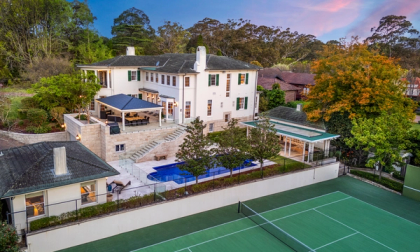
What suburbs have the best rental yields in Australia?
Securing a passive income stream through a rental property can be pivotal in the wealth-building process. So, what makes rental yields important when entering Australia’s housing market as an investor?
A rental yield refers to how much income (rent) a property generates each year. We measure it as a percentage of the property’s value. High rental yields can mean significant ongoing returns on investment (hence why you’re keen to find suburbs with high rental yields!)
But the whole investing space can be daunting. It’s difficult to navigate all your options without getting lost in all the commentary on the property market.
Luckily, simplifying complex real estate concepts is my wheelhouse as a veteran property investor and advisor. I’ve got decades of first-hand experience seeing how transformative the right income properties can be for savvy investors.
Let’s keep things simple and focus on rental yields. I’ll uncover the most rewarding rental income suburbs in the Australian property market in 2024.
Understanding rental yields in Australia
Rental yields can be tricky concept to grasp for real estate new comers. So to get a better understanding let's crunch some numbers with a real-world example
Gross rental yield example:
-
You own property worth $500,000 in Perth.
-
You receive $30,000 each year in rent.
-
Your gross rental yield is equal to $30,000 ÷ $500,000 X 100 = 6%.
The formula: Annual rental income ÷ The value of the property X 100 = gross rental yield.
Eagle-eyed readers will notice the word ‘gross’. Gross rental yield is useful to determine a property’s general investment potential, but it doesn’t give you a realistic idea of your outgoings. To work out net rental yield, factor in your expenses.
These expenses may include:
-
Repairs and maintenance
-
Strata levies
-
Council rates
-
Vacancy costs
-
Property management/legal/inspection fees
-
Property insurance
-
Depreciation
Note that some of these expenses are tax deductible to property owners who rent out their houses/units, but it’s still best to include them in your calculations.
Net rental yield example:
-
Same situation as above: you own property worth $500,000 in Perth.
-
You bring in $30,000 in rent.
-
Your expenses come to $10,000.
-
The calculation now looks like this: ($30,000 - $10,000) ÷ $500,000 ÷ X 100 = 4%.
The amended formula: (Annual rental income - costs of owning your property) ÷ The value of the property X 100 = net rental yield.
Why is rental yield important for property investors?
The best rental yields mean more than just a steady income. This percentage rates the efficiency of an investment property in generating returns. It’s a vital metric that affects your investment decision-making. Property investment is a potentially life-changing commitment. Looking at suburb rental yields as part of your research process is just one of many factors you’ll need to consider before taking the plunge. Before we spotlight some suburbs, we will discuss the underlying factors that typically lead to high rental yields.
How does a suburb get a strong rental yield?
Any particular suburb can attain high rental yields through a combination of several interconnected factors. For perspective, in Australia, a net rental yield of ~4.5% or higher is considered ‘good’. So, I consider anything above that benchmark as ‘strong’.
-
High rental demand: Suburbs near universities and business districts tend to have reliable rental demand.
-
Limited housing supply: If insufficient housing is available, this supply issue can lead to higher rents.
-
Economic activity: Suburbs with growing industries can attract workers, driving up rental prices.
-
Lifestyle: Some suburbs attain higher rental yields for their ‘vibes’ - perhaps they are cultural centres or near a popular beach area, for example.
-
Transport links: Good transport links into city centres can heighten a suburb’s appeal, enhancing rental demand.
Potential investors should look out for these characteristics when identifying suburbs for investment opportunities.
However, the golden ticket for wealth-building is suburbs that offer high rental yields and potential for capital growth. High rental yields aren’t necessarily the best rental yields, depending on your investment strategies (more about that later).
What are the best rental yield suburbs in Australia?
Let’s go through the states one by one to highlight Australian suburbs with the highest gross rental yields. Identifying properties in these high-yield suburbs should offer investors a fantastic opportunity to establish a steady cash flow. Note that, for the purposes of these stats, I’m combining house and unit rental yields. However, digging into the granular details will reveal some interesting differences between the two in some suburbs. Our source for this data is Smart Property Investment.
1. New South Wales
New South Wales, particularly in regions such as Broken Hill and Lismore, has seen consistently high rental yields, benefiting from a mix of urban expansion and regional appeal. These areas often attract a diverse range of tenants, from students to professionals, ensuring steady demand and strong rental returns over time. You won’t find central Sydney suburbs here as they typically return around 2% rental yields.
|
NSW suburb |
Average gross rental yields |
|
Broken Hill |
8.99% |
|
North Lismore |
8.99% |
|
Girards Hill |
8.32% |
|
Bonalbo |
8.27% |
|
Warabrook |
8.09% |
|
Moree |
8.02% |
|
Lismore |
7.76% |
|
Cobar |
7.65% |
|
Berrigan |
7.44% |
|
Lochinvar |
7.37% |
2. Victoria
Victoria showcases a pattern where both urban centres and remote locations offer attractive rental yields. The state's vibrant cultural scene and robust educational institutions continue to drive rental demand, particularly in inner-city suburbs.
|
VIC suburb |
Average gross rental yields |
|
Ouyen |
9.85% |
|
Melbourne |
7.72% |
|
Carlton |
7.55% |
|
Travancore |
7.34% |
|
Heatherton |
6.91% |
|
East Bairnsdale |
6.88% |
|
Nhill |
6.87% |
|
Warracknabeal |
6.86% |
|
Seymour |
6.66% |
3. Queensland
Queensland has experienced some of the highest rental yields in Australia, particularly in mining towns like Bucasia and Middlemount. High demand for short-term housing is pushing rental yields to impressive highs.
|
QLD suburb |
Average gross rental yields |
|
Bucasia |
17.25% |
|
Middlemount |
12.8% |
|
Koongal |
12.32% |
|
Scottville |
12.13% |
|
Moranbah |
11.89% |
|
Collinsville |
11.38% |
|
Dysart |
10.61% |
|
Deagon |
9.69% |
|
Monto |
9.6% |
|
Mornington |
9.6% |
4. Australian Capital Territory
In the ACT, suburbs such as Red Hill and Hawker demonstrate strong rental yields, supported by a stable demand linked to public sector employment near Australia’s capital city, Canberra. Due to its governmental and administrative roles, this region consistently offers lower vacancy rates and reliable tenant demand.
|
ACT suburb |
Average gross rental yields |
|
Red Hill |
8.09% |
|
Hawker |
7.03% |
|
Curtin |
6.49% |
|
Macquarie |
6.48% |
|
Reid |
6.31% |
|
Hughes |
6.25% |
|
Lyons |
6.23% |
|
Gungahlin |
6.12% |
|
Hackett |
6.04% |
|
Scullin |
5.77% |
5. South Australia
South Australia maintains high rental yields thanks to industrial activity and limited housing supply. These factors make it an attractive region for investors looking for stable income-producing properties.
|
SA suburb |
Average gross rental yields |
|
Roxby Downs |
10.37% |
|
Port Pirie West |
9.09% |
|
Petersborough |
8.78% |
|
Solomontown |
8.74% |
|
Renown Park |
7.98% |
|
Port Augusta |
7.74% |
|
Risdon Park |
7.7% |
|
Whyalla Norrie |
7.61% |
|
Whyalla Stuart |
7.35% |
|
Whyalla |
7.12% |
6. Western Australia
Western Australia’s rental yields have been highly volatile but potentially lucrative. This volatility reflects the boom-and-bust nature of the resources sector’s prevalence in WA markets.
|
WA suburb |
Average gross rental yields |
|
Baynton |
15.85% |
|
Tom Price |
15.23% |
|
Kambalda East |
12.33% |
|
Newman |
11.85% |
|
Kambalda West |
11.66% |
|
South Hedland |
11.38% |
|
Bulgarra |
11.25% |
|
Nickol |
11.04% |
|
Boulder |
10.93% |
|
South Boulder |
10.89% |
7. Northern Territory
The Northern Territory shows strong rental yields in areas like Darwin and Karama. Key industries such as mining and tourism, combined with limited housing availability, are driving these percentages.
|
NT suburb |
Average gross rental yields |
|
Darwin |
9.21% |
|
Karama |
9.11% |
|
Gray |
8.86% |
|
Driver |
8.78% |
|
Tennant Creek |
8.47% |
|
Millner |
8.12% |
|
Bakewell |
8.07% |
|
Araluen |
7.86% |
|
Johnston |
7.73% |
|
Parap |
7.62% |
8. Tasmania
Tasmania has seen a gradual increase in rental yields thanks to its growing popularity as a lifestyle destination. The appeal of affordable property prices in beautiful scenic areas attracts long-term residents and holiday renters alike.
|
TAS suburb |
Average gross rental yields |
|
Queenstown |
7.77% |
|
Gagebrook |
6.2% |
|
Moonah |
5.94% |
|
Waverley |
5.92% |
|
Newnham |
5.9% |
|
Mayfield |
5.89% |
|
Ravenswood |
5.73% |
|
George Town |
5.65% |
|
Herdsmans Cove |
5.62% |
|
Clarendon Vale |
5.44% |
Considerations for investors
As alluded to earlier, depending on your investor strategy, a high rental yield does not automatically make for a sound investment. There are plenty of other factors to consider. ● Property value growth potential: If your property value increases over time, this logically increases the overall return on investment (you gain equity or turn a profit if you decide to sell). You get substantial capital gains on top of your rental income. If an area has substantially high rental yields but offers little growth potential, you may want to think twice about investing. ● Vacancy rates: To earn rental income, you need tenants. Low vacancy rates suggest sufficient demand in the rental market you can rely on. High vacancy rates in any given suburb can lead to reduced income and might require lower rental prices to attract tenants. ● Long-term investment strategy: Consider your long-term property portfolio and your overarching goals. Is immediate cash flow a priority? Are you looking to protect against market fluctuations? Are you hoping to expand your portfolio further? Assessing your long-term strategy will dictate what’s best for you at any given moment in your property investment journey. Speaking to a professional property specialist will help you determine your aims. In addition to these three critical factors, you’ll want to investigate the broader direction the suburb is taking. Are there local amenities for tenants? Is the local infrastructure sufficient to support growth? Is future development on the horizon for the area? Understanding the area will help build a better picture of the whole package for your prospective investment property. Speaking to property specialists about this can help you make well-informed decisions about your financial future.
Tips for finding high-yielding properties
So, what should you do if you’re looking to find high-yielding investment properties in Australia? Here’s what I would do:
1. Investigate
Depending on your preferences in terms of state, thoroughly research the highest-yielding suburbs in the tables above.
2. Go regional
Opt for regional areas—they tend to offer higher yields than properties within capital cities (generally). However, the downside is that they typically offer less capital growth potential (though that, also, is not necessarily always the case).
3. Visit government websites
Head online to help you understand local markets and other relevant elements, such as your tax implications:
-
Reserve Bank of Australia (RBA): This includes information on affordable suburbs and housing market trends, including median rents and house prices
-
Australian Taxation Office (ATO): Insights on your property investment tax implications and regulations.
-
State Government Websites: Each state has websites dedicated to housing and property. These can provide local market insights, zoning regulations, and information concerning development plans.
4. Consult an expert
My main piece of advice is to consult a property management specialist to unpack all of the elements. They can help you:
-
Assess what you can afford and your borrowing power with various calculators, including home loan and mortgage repayment calculators.
-
Talk through your long-term strategy.
-
Unpack the intricacies of the property market in Australia.
-
Provide suitable choices for properties in various suburbs offering high-yield potentials.
Having an expert on the side to offer personalised advice is critical when your capital and financial future are at stake.
Summing up
Buying an investment property in Australia is a thrilling commitment. With careful research and sound judgment, you can find yourself well on your way to financial freedom. Understanding the significance of rental yields can help you secure better returns. Selecting the right suburb based on the best rental yields and several other factors gives you the best chance of an astute investment, but I’d advise against trusting instincts or going alone. Feel free to connect with me or explore more about DiJones and our services for advice and assistance. We’re here to help you navigate the complex property market and maximise your investment potential; there’s no blanket approach to property investment, so it’s best to seek personalised, professional advice.
Was this content helpful to you?





